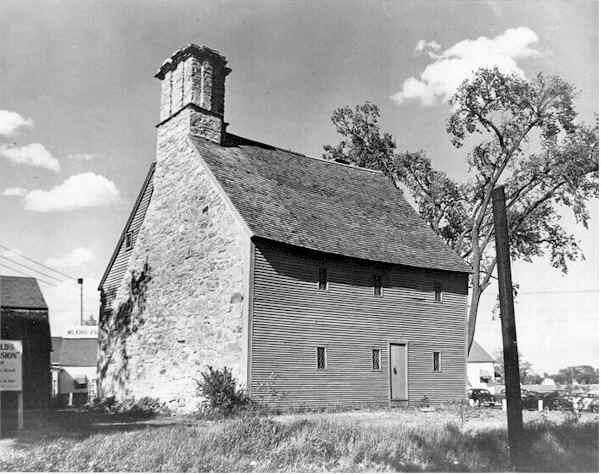The Disappearing Landscape

I began this assignment with the intention of being reunited with the scared landscape; however, while scouring this urban environment of metal and glass, I realized that the task was disheartening. I became excited when I saw a patch of grass that was more than a foot. My personal observations have not only supported the idea of the vanishing landscape, but according to Curtis White we have been presented with the ultimate environmental dilemma, “we want to save it, yet, we will not be suppressed by it.” I am constantly reminded of this never ending battle, not when I look at the effects of urban encroachment, but the attempts that we have made to preserve our sacred history. Here, I will further discuss my experience with communing with nature at the Eleazar Arnold house in Lincoln, Rhode Island.
I first became acquainted with the distorted seventeenth-century wooden structure from a class field trip during my sophomore year here at Brown. As the yellow bus turned off the Lincoln highway, I was instantly surrounded by modern houses that dotted the rural landscape. The bus continued down the long stretch of asphalt known as Mendon Road. I anxiously watched out the window waiting patiently for the change and then I saw it in the distance. The large gray stone ender house rose out of the landscape. It reminded me of something out a Washington Irving novel. The group proceeded around the front of the house through the fence and the brush that surrounded the property. My attention was immediately drawn to the large limestone chimney. I imagined it that it was a cold winter’s day, constantly expelling smoke from the fire that was lit inside. The tour guide and us student’s suggested that a further independent exploration of the site was necessary. I quickly went around the back of the property to get away from the traffic noises in the front of the house. To my surprise, I was confronted not with green coverage or rolling hills, but a modern dwelling and also a parked car!
In many ways, I felt that my experience was controlled. It is apparent that the Eleazar Arnold had too become another sterilized structure a consequence of urbanization. While writing this, I was continuously reminded of Plymouth Plantation. The site is not important for its historical significance, but can be seen as the physical manifestation of American Puritanism in which the natural and wild landscapes need to be tamed.
I would consider that unlike many other people's experiences with nature, this can be considered the antithesis. Perhaps, my relationship with this particular structure may have been rectified if it was preserved in a rural environment? Unfortunately, in its present location the house is enveloped by the noise, pollution and chaos associated with the urban environment. It was at one time a very important part of the sacred landscape; however, today its sacral quality is diminishing with passing time. We are trying to preserve it, yet, we are altering it to fit our needs.
Posted at Apr 01/2008 08:00AM:
Heidi: I agree that we tend to conflate abstract notions of sacred space with others of nature, silence, and separation. I remember having a similar experience the first time that I saw the Greek archaeological site of Eleusis (in modern Elefsina), a site which I had been thinking and writing about for months (always in the context of its ancient grandeur) and was so disappointed to find it surrounded by smoke stacks, busy streets, and pollution. I also share the anxieties that you brought up in your intro.
Posted at Apr 01/2008 09:00AM:
Elisa: I think your exercise speaks to our collective memory of the sanctity of the past...we often preserve landscapes of the past with a preconceived notion of that space that fails to live up to reality. Can such a space really be preserved? Or will it always be altered simply because time passes, distancing this landscape from our present surroundings?
Posted at Apr 01/2008 11:31AM:
claudia: Following from Elisa's point, I think that your description really speaks to many of our discussions in class about preservation: the preservation of site and the preservation of memory. Do our memories of a place shape the way it is viewed in the present? Does our collective memory as a society transform the way a space is reconstrcuted?
Posted at Apr 01/2008 12:07PM:
keffie: You also bring up the point of expectation (and disappointment). How would your experience have been different if you were not anticipating an opportunity to connect with nature? How does the attitude that we bring with us change the way in which we experience it?
